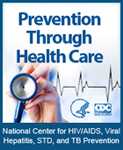CDC Statement for National Gay Men's HIV/AIDS Awareness Day (Sept. 27)
Media Statement
For immediate release: September 25, 2012
Contact: National Center for HIV/AIDS, Viral Hepatitis, STD, and TB Prevention
404-639-8895, NCHHSTPMediaTeam@cdc.gov
The fifth annual National Gay Men’s HIV/AIDS Awareness Day, Sept. 27, 2012, is a time for us to reflect on the heavy toll that HIV takes on gay and bisexual men across the country and to recommit to fighting the disease. Men who have sex with men (MSM) represent 2 percent of the U.S. population, yet account for more than half of both new HIV infections each year and Americans living with HIV. Since the beginning of the epidemic, nearly 350,000 gay and bisexual men with AIDS have died, and more than 8,000 still die each year.
Below are quotes for attribution to Kevin Fenton, MD, Director, CDC’s National Center for HIV/AIDS, Viral Hepatitis, STD, and Tuberculosis Prevention:
On National Gay Men’s HIV/AIDS Awareness Day, we honor the remarkable history of gay men’s leadership in the fight against the HIV epidemic. Three decades ago, extraordinary community and public health prevention efforts led to dramatic declines in new HIV infections among men who have sex with men. Yet infection rates are now increasing among young gay and bisexual men, particularly men of color. We must not allow another generation to be devastated by this disease. Together we can, and must, revitalize the passion and dedication that helped turn back the HIV epidemic among gay men during its darkest days.
Research and surveillance data from the Centers for Disease Control and Prevention remind us that gay and bisexual men remain at the epicenter of the U.S. HIV epidemic. HIV prevention, education and testing for men who have sex with men remain top CDC priorities. As part of CDC’s High Impact Prevention approach to fighting HIV, we are working to ensure resources are directed to the activities that will have the greatest impact in reducing the toll among gay and bisexual men, and other populations at highest risk.
One of the most important things every gay and bisexual man can do to stop the spread of HIV is to get tested for the disease at least once a year. If you test negative, you’ll have peace of mind and can redouble your efforts to stay safe. And if you test positive, you can get the medical care and support that you need to keep healthy and protect others from infection. It’s a simple, quick way to reduce the toll of HIV, and can ultimately help us to turn the tide in the fight against HIV and AIDS in America.
###
- Page last reviewed: September 25, 2012
- Page last updated: December 27, 2013
- Content source:


 ShareCompartir
ShareCompartir

